[et_pb_section admin_label=”section”]
[et_pb_row admin_label=”row”]
[et_pb_column type=”4_4″][et_pb_text admin_label=”Text”]
In today’s competitive business world, customer satisfaction is one of the key factors that determine the success of a business. A satisfied customer is more likely to remain loyal to a company and recommend it to others, leading to increased sales and revenue. In contrast, an unsatisfied customer can lead to negative reviews, loss of sales, and a damaged reputation. Therefore, it is crucial for businesses to focus on customer satisfaction to ensure their continued success. In this article, we will discuss the ultimate guide to customer satisfaction (CSAT) and how businesses can improve their CSAT scores.
What is Customer Satisfaction (CSAT)?
Customer satisfaction (CSAT) is a measure of how well a product or service meets the expectations of customers. It is typically measured using a survey that asks customers to rate their satisfaction with a particular product or service. The survey can be conducted in various ways, including through email, phone, or in person.
CSAT scores are usually reported as a percentage, with 100% indicating that all customers are completely satisfied, and 0% indicating that no customers are satisfied. However, it is rare to achieve 100% customer satisfaction as every customer has unique needs and expectations. Therefore, it is important to set realistic goals and strive to improve the CSAT score over time.
Why is Customer Satisfaction (CSAT) Important?
Customer satisfaction is important for several reasons. Firstly, it is an indication of how well a business is meeting the needs and expectations of its customers. If customers are satisfied, they are more likely to remain loyal to the business and continue to use its products or services. This will gradually lead to increased sales for the business.
Secondly, customer satisfaction is closely linked to customer retention. When customers are satisfied, they are more likely to become repeat customers, which can increase customer lifetime value. Repeat customers also tend to be less expensive to acquire than new customers, as there is already an established relationship.
Finally, customer satisfaction can also impact a business’s reputation. Satisfied customers are more likely to recommend a business to others, leading to positive word-of-mouth marketing. In contrast, unsatisfied customers can leave negative reviews and damage a business’s reputation.
How to Measure Customer Satisfaction (CSAT)?
There are several ways to measure customer satisfaction (CSAT), including the following:
1. Customer Satisfaction Surveys: This is the most common way to measure CSAT. It involves sending a survey to customers asking them to rate their satisfaction with a product or service on a scale of 1 to 5 or 1 to 10. The survey can be shared through multiple platforms.
Sample Questions:
a) How satisfied are you with the overall quality of our product/service?
b) How likely are you to recommend our product/service to others?
2. Net Promoter Score (NPS): NPS is a metric that measures the likelihood of a customer recommending a product or service to others. It is measured on a scale of 0 to 10, with customers who rate 9 or 10 being considered promoters, customers who rate 7 or 8 being considered passive, and customers who rate 0 to 6 being considered detractors.
Sample Questions:
a) On a scale of 0 to 10, how likely are you to recommend our product/service to others?
b) What is the primary reason for your score?
3. Customer Effort Score (CES): CES measures how easy it is for a customer to use a product or service. It is typically measured using a survey that asks customers to rate how easy or difficult it was to use a product or service on a scale of 1 to 5 or 1 to 10.
Sample Questions:
a) On a scale of 1-10, how easy was it for you to find the product/service you were looking for?
b) How much effort did you have to put in to get your issue resolved?
4. Customer Churn Rate: Churn rate measures the percentage of customers who stop using a product or service over a given period. A high churn rate indicates that customers are not satisfied with the product or service.
Sample Questions:
a) Have you considered canceling your subscription or service with us?
b) Have you found a better alternative to our product or service?
5. Product Market Fit: Product market fit can be measured by the level of customer satisfaction and the extent to which a product meets their expectations and solves its problems.
Sample Questions:
a) What are some of the key factors that contribute to product-market fit?
b) How do you know if your product has achieved a good market fit?
How to Improve Customer Satisfaction (CSAT)?
Improving customer satisfaction (CSAT) is critical for any business that wants to succeed in today’s highly competitive market. Here are some strategies that can help improve CSAT:
1. Provide excellent customer service: Ensure that your customers are satisfied with the service they receive. Respond to their inquiries and complaints promptly and empathetically. Train your customer service team to be polite, patient, and helpful.
2. Deliver high-quality products and services: Ensure that your products and services meet or exceed your customers’ expectations. Make sure that your products are of high quality and that your services are delivered promptly and professionally.
3. Personalize the customer experience: Treat each customer as an individual and customize their experience based on their preferences and needs. Use their names in communication, offer personalized recommendations, and tailor your marketing messages to their interests.
4. Gather and act on customer feedback: Collect feedback from your customers regularly and take action on their suggestions and complaints. This will show that you value their opinions and are committed to improving their experience.
5. Be transparent and honest: Be transparent about your products, services, and policies. Don’t make false promises or mislead customers. Honesty and transparency build trust and loyalty.
6. Offer incentives and rewards: Offer rewards, discounts, or other incentives to customers who provide feedback, refer new customers, or make repeat purchases. This will encourage them to continue doing business with you.
7. Continuously improve: Continuously monitor your customer satisfaction levels and look for ways to improve your products, services, and customer experience.
By implementing these strategies, you can create a positive customer experience and improve customer satisfaction, which can lead to increased loyalty, retention, and revenue.
10 Best Customer Satisfaction Tools in 2023
Improving customer satisfaction is crucial for the success of any business, and customer satisfaction tools can help in achieving this goal. Here is an overview of 10 of the best customer satisfaction tools:
1. SurveySparrow
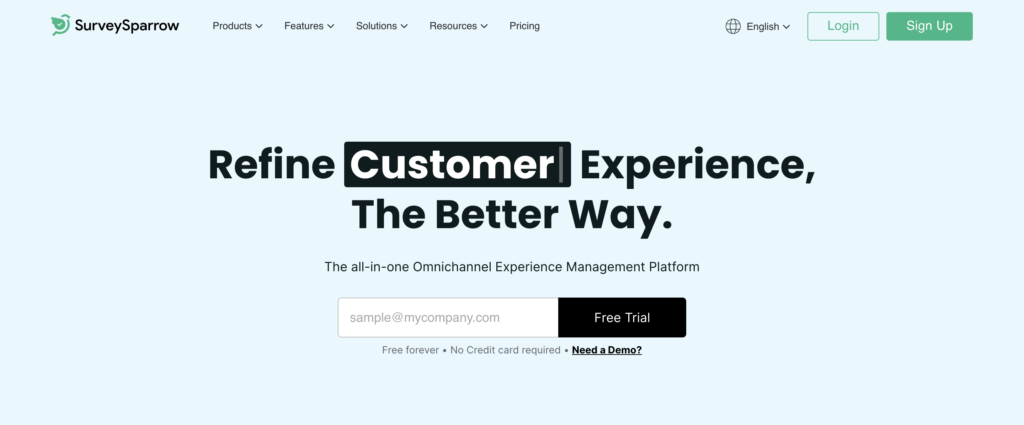
SurveySparrow helps you get a better picture of how your customers feel about your product or service in order to improve customer experience. By leveraging real data provided by customers, businesses can identify pitfalls they may have otherwise missed, become even more efficient in improving their customer service, and maximize results.
The platform offers a range of customizable survey templates designed to gather feedback from customers about their experience with a product or service. The surveys can be sent through various channels, including email, SMS, and web links
SurveySparrow’s CSAT tool provides businesses with a comprehensive dashboard that displays real-time customer feedback, making it easy for businesses to track customer satisfaction levels and identify areas for improvement. The platform also offers advanced analytics that allow businesses to analyze feedback data and generate actionable insights.
G2 Rating: 4.4/5
2. Qualtrics
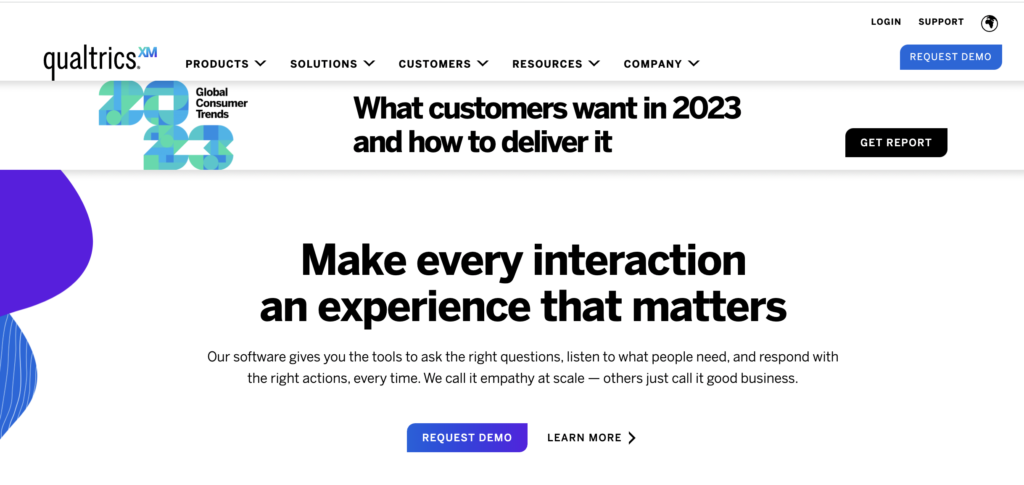
Qualtrics CSAT tool is designed to help businesses measure and improve customer satisfaction by providing a platform to collect and analyze feedback from customers. It offers advanced analytics and reporting features that enable businesses to gain insights into customer feedback data. This includes sentiment analysis, text analytics, and machine learning capabilities.
G2 Rating: 4.4/5
3. SurveyMonkey

SurveyMonkey is a widely used survey software that offers a customer satisfaction (CSAT) tool designed to help businesses measure and improve customer satisfaction. SurveyMonkey’s CSAT tool allows businesses to track customer satisfaction levels in real-time, enabling them to identify areas of concern and take action quickly.
G2 Rating: 4.4/5
4. Medallia
Medallia is a customer experience management platform that allows businesses to capture and analyze customer feedback across multiple channels. The tool uses a variety of methods to gather customer feedback, including surveys, feedback forms, and social media monitoring. The data collected through these channels is then aggregated and analyzed in real-time, providing companies with valuable insights into their customers’ experiences.
G2 Rating: 4.4/5
5. HubSpot
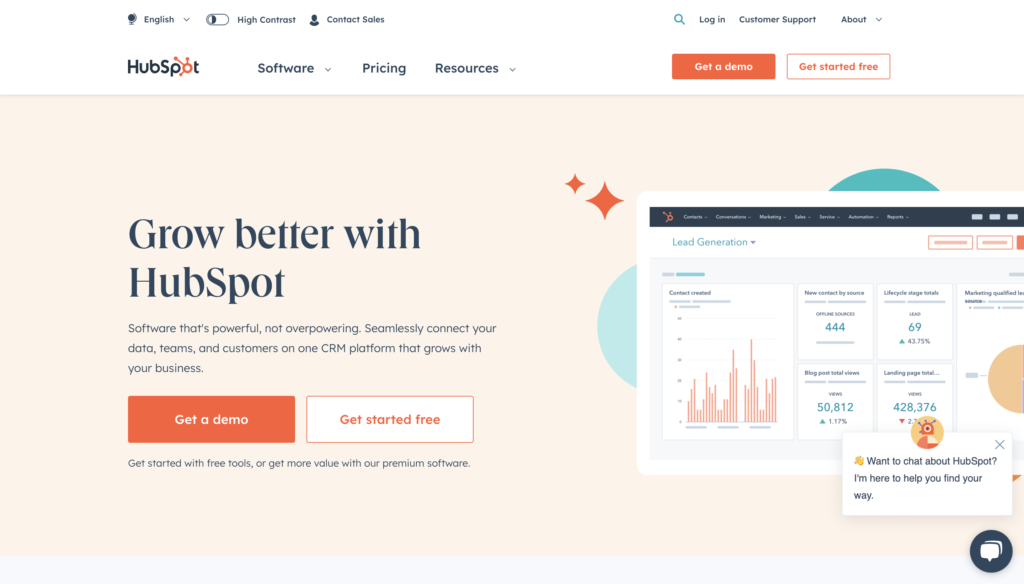
HubSpot’s CSAT tool is designed to help companies collect feedback from their customers and use that feedback to improve the customer experience. The tool includes features such as surveys, feedback forms, and customer service ticket tracking, which allow companies to gather feedback from a variety of channels and analyze that feedback in real-time. Another benefit of HubSpot’s CSAT tool is its ability to automate the feedback collection process. With features such as chatbots and automated surveys, companies can gather feedback from customers without requiring them to take additional steps. This can help increase response rates and provide companies with more data to analyze.
G2 Rating: 4.4/5
6. Freshdesk
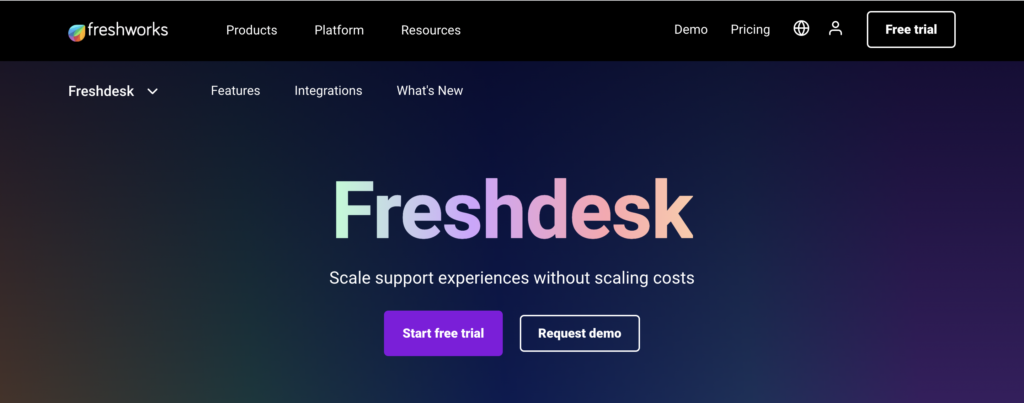
Freshdesk’s CSAT tool includes robust reporting and analytics features. Companies can track customer satisfaction scores over time, identify trends in customer feedback, and drill down into specific customer service interactions to identify areas for improvement. This can help companies identify common issues that are impacting customer satisfaction and make targeted improvements to their customer service processes.
G2 Rating: 4.4/5
7. UserTesting
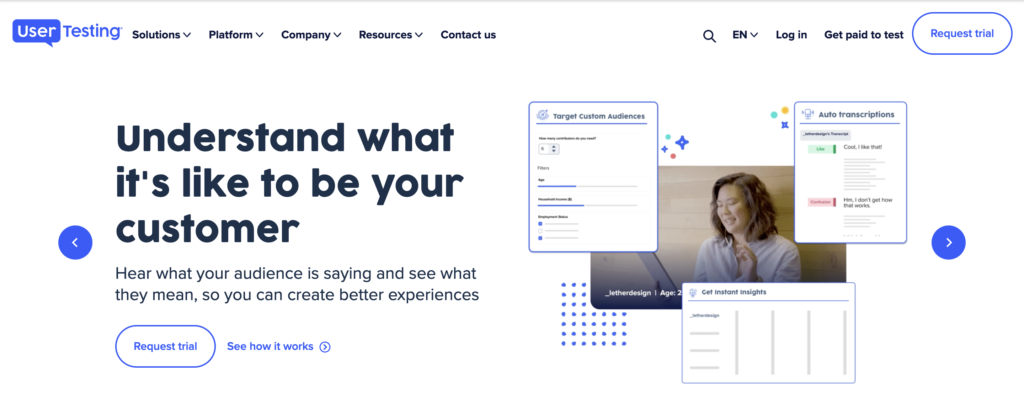
UserTesting is a customer experience management platform that allows businesses to gather feedback from customers about their experience with a product or service. The tool uses a variety of methods to gather customer feedback, including surveys, feedback forms, and usability testing. The data collected through these channels is then aggregated and analyzed in real-time, providing companies with valuable insights into their customers’ experiences.
G2 Rating: 4.5/5
8. Delighted
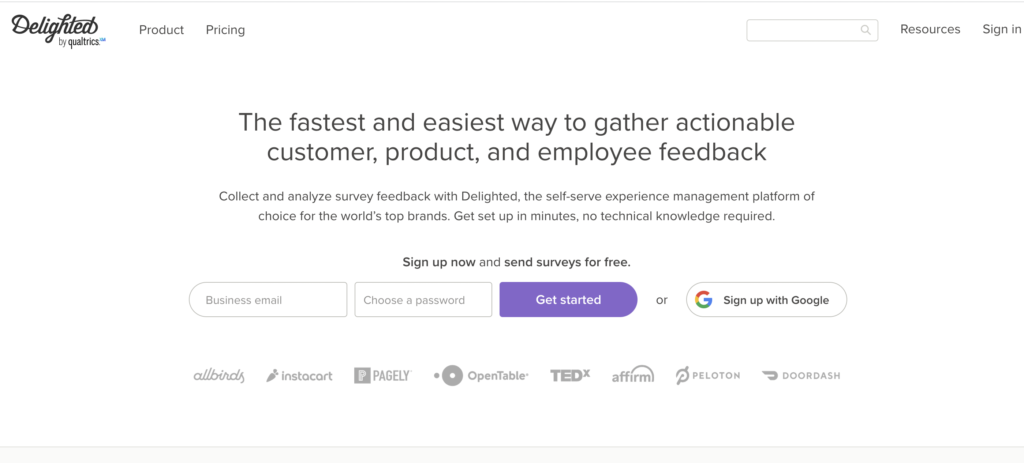
Delighted is a customer feedback software platform that specializes in measuring and improving customer satisfaction. The platform is easy to set up and use, with intuitive survey design and response tracking features. This makes it an ideal tool for small and mid-sized businesses that are looking for a straightforward solution to measure and improve customer satisfaction.
G2 Rating: 4.7/5
9. Salesforce

Salesforce is a leading customer relationship management (CRM) platform that offers a range of tools for managing customer interactions and improving customer satisfaction. Salesforce’s CSAT tool allows companies to collect feedback from customers through surveys and other feedback channels, such as email or social media. The feedback collected is then analyzed and presented in a dashboard that allows companies to monitor customer satisfaction scores in real-time.
G2 Rating: 4.3/5
10. Nicereply
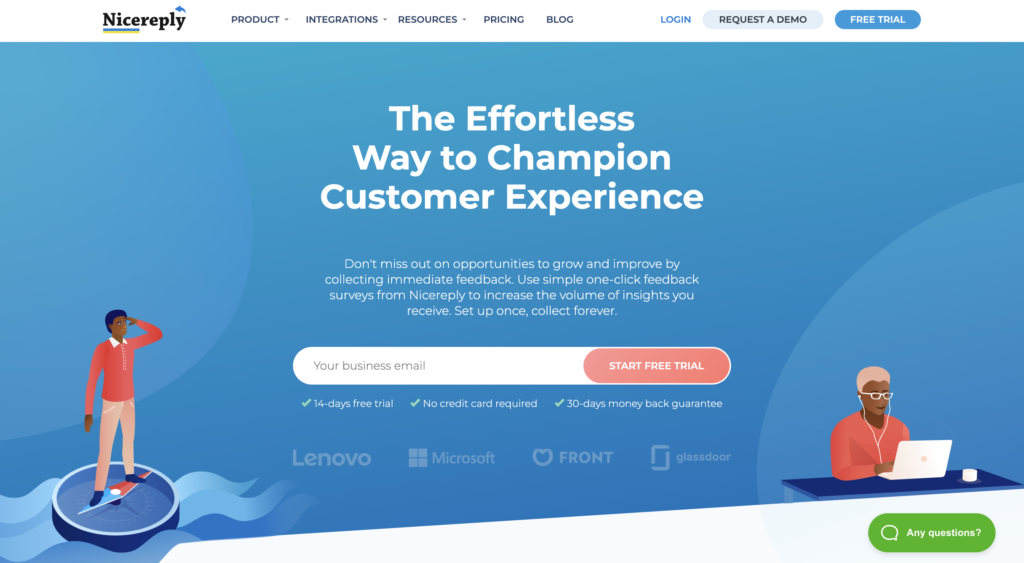
Nicereply is a customer satisfaction software that allows businesses to measure and track customer satisfaction through surveys and feedback forms. Nicereply’s CSAT tool also includes features that allow companies to track customer satisfaction across different touchpoints. This includes email, phone, in-app interactions, and other channels. By tracking customer satisfaction across multiple touchpoints, companies can gain a more comprehensive understanding of the customer journey and identify areas where improvements can be made.
G2 Rating: 4.5/5
Each of these tools has unique features and benefits, making them suitable for different businesses and industries. Some offer advanced analytics and reporting features, while others focus on social media monitoring and management.
Overall, investing in a customer satisfaction tool is a wise decision for any business looking to improve customer experience and satisfaction. By gathering and analyzing customer feedback, businesses can make data-driven decisions that help them stand out in a crowded marketplace and build a loyal customer base.
Best Practices for Customer Satisfaction Surveys
- Customer satisfaction surveys are essential for understanding customers’ needs and improving products/services
- Keep surveys short (5-10 minutes) to prevent survey fatigue and lower response rates
- Use clear and simple language in questions to avoid confusion and ensure all respondents can understand
- Use a mix of question types (open-ended and closed-ended) to gather both qualitative and quantitative data
- Personalize surveys by addressing customers by name and making the survey relevant to their experience with your company
- Analyze survey data and take action on insights received to improve customer satisfaction and loyalty
- Improving customer satisfaction and loyalty can increase revenue and profitability
Wrapping Up
To conclude, there are a variety of tools available for businesses to enhance their customer satisfaction efforts. From customer relationship management (CRM) software and social media monitoring tools to live chat support and customer feedback platforms, businesses have an array of options to engage with their customers and provide personalized, efficient, and effective service. By leveraging these tools, businesses can gain valuable insights into their customers’ needs and preferences, optimize their operations, and build stronger relationships with their customers. Ultimately, investing in customer satisfaction tools can lead to increased customer retention, loyalty, and revenue for businesses of all sizes and industries.[/et_pb_text][/et_pb_column]
[/et_pb_row]
[/et_pb_section]



Leave a Reply